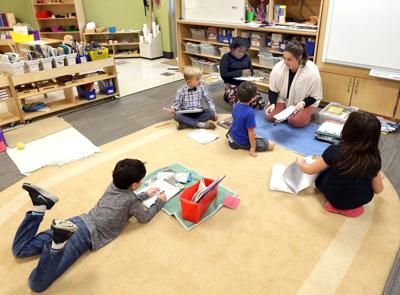Some Charleston County schools are among the best in South Carolina — and in the country. Others are among the worst.
Resolving that disparity — lifting up underperforming schools while maintaining a high standard of excellence district-wide — has for decades proven frustratingly difficult.
Sometimes the problem was a lack of political will. Sometimes it was a lack of innovative ideas. Sometimes it was simply the inherent difficulty of reversing so many years of neglect, prejudice and apathy.
But South Carolina lawmakers are finally turning their full attention to school-related issues this year, after the calls to action in The Post and Courier’s “Minimally Adequate” series of reports.
So it is as good a time as any for the Charleston County School Board to take ambitious steps to better ensure that each of the district’s more than 49,000 students has access to a quality education. A list of proposed changes the board approved last week largely fits that bill.
Some of the suggestions aren’t controversial or particularly novel: “Recruit and employ highly successful principals and teachers … Provide training for teachers … Improve the academic performance of the area’s low-performing and under-performing schools.”
Others, like redrawing attendance lines, merging small schools and adjusting magnet school applications to draw in students from underserved areas, are far more complicated. They’re also important structural changes that in some cases may be long overdue.
The board’s strategy is based in part on a recent report by the Clemson University Office of Inclusion that highlighted longstanding racial inequities holding back students in highly segregated and overwhelmingly low-income schools.
The report found that black students performed significantly worse than their white peers on state-mandated testing and the ACT, and graduated high school at notably lower rates, for example. And the segregation of schools can exacerbate underperformance.
Unfortunately, the racial imbalance of Charleston County schools too often reflects the racial composition of their surrounding neighborhoods.
Adjusting attendance zones could help undo some disparities, but dramatic efforts to improve school performance across the board will be needed to help struggling students catch up and keep successful ones from falling behind.
Part of that effort should involve consolidating some smaller schools in order to pool resources and provide students with a wider range of high-quality curricular and extracurricular offerings.
Flexibility and creativity are critical as well. Some of the district’s brightest examples of educational success are magnet and charter schools. Expanding access to those programs and creating similar ones elsewhere ought to be a priority.
These are big, disruptive changes that will demand extensive input from parents, teachers, principals and administrators. They won’t be easy to implement or easy to follow through with.
That doesn’t mean they’re not worthwhile.
Charleston County students deserve a shot at a great education, regardless of their race, their parents’ income or their ZIP code.







